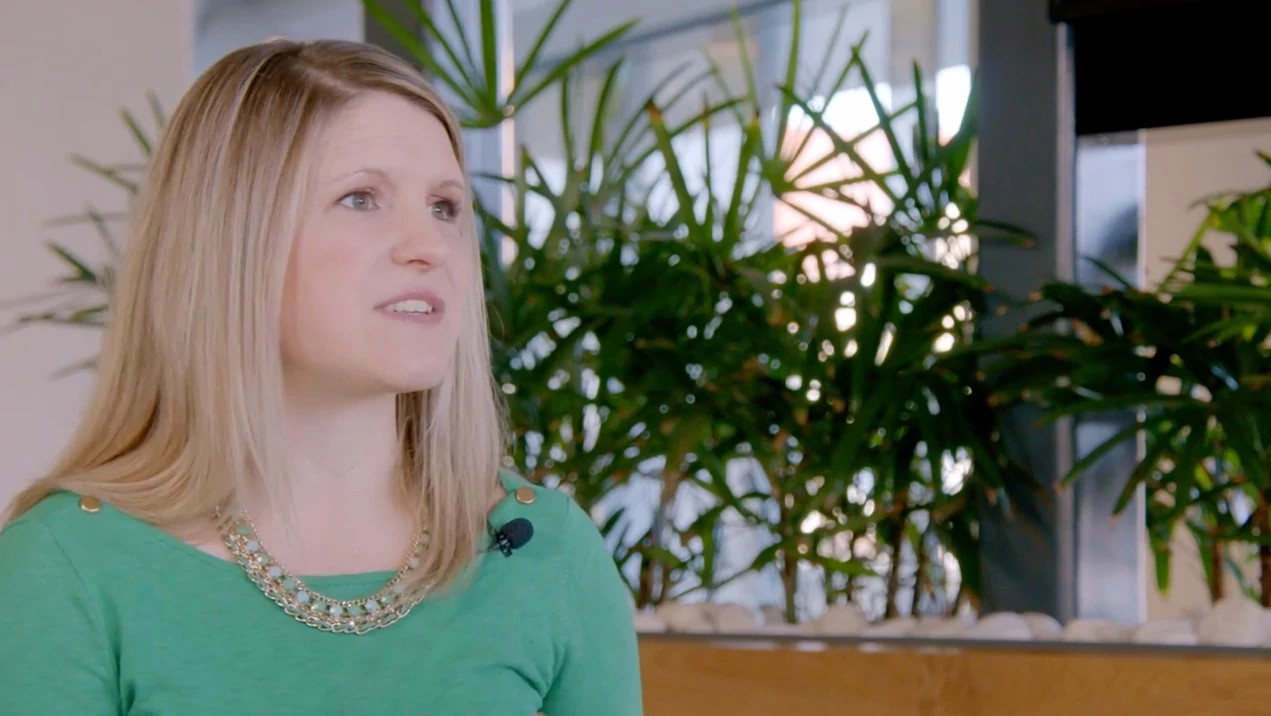
Blog
Creative workflow management: a 7-step guide

Creative projects can be complex, often involving many collaborators, commentators, and resources. Administrative tasks like chasing feedback or trying to find files can easily overshadow the creative process.
A 2023 survey showed that less than a third of creative professionals are able to dedicate the majority of their day to actual creative work. To free up time for ingenuity and deliver exceptional results, teams must implement efficient creative workflows and tools.
This guide will explain why creative workflows are important and how to manage them step-by-step. With these strategies, you can learn how to make business processes better and achieve creative goals.
TL; DR
- A creative workflow is a structured process that guides teams from an initial concept to a finished project.
- A typical creative workflow process can be divided into five phases, including defining the project, generating and developing ideas, gathering feedback and approvals, project launch, and evaluation.
- Creative workflow management is the process of organizing and optimizing how teams work together to achieve successful creative projects.
- A well-defined creative team workflow offers many benefits for businesses, including improved efficiency, collaboration, quality, resource management, and flexibility.
- There are seven steps to build an effective workflow process, such as defining project goals and choosing the right tools and software.
- Adopting a workflow process has its challenges that need to be addressed, such as resistance to change and limited resources and tools.
What is a creative workflow?
A creative workflow is a structured process that guides teams from an initial concept to a finished project. It's a roadmap outlining the steps and tools needed to bring ideas to life efficiently and effectively.
While inspiration is often spontaneous, a workflow provides a framework that supports the creative process without stifling it. It needs defined aspects like roles, tasks, and communication methods to streamline operations and boost team performance.
Key phases of a creative workflow
A typical creative workflow process can be divided into five phases:
1. Defining the project: To start, craft a clear plan using acreative brief template to identify key elements like objectives, timeline, audience, and budget.This phase also includes:
- Holding a formal kickoff meeting with the client.
- Assigning the creative team’s roles and responsibilities.
- Introducing collaboration software to optimize workflows.
- Conducting initial market research and competitor audits.
2. Generating and developing ideas: Next, brainstorm your concepts as a creative team and once aligned, start bringing the ideas to life. For instance:
- Hosting brainstorming sessions and other idea generation strategies likemind mapping.
- Reviewing all ideas as a group, narrowing the list down to the right concept.
- Developing the chosen idea to create first versions for internal review.
- Holding regular meetings to discuss updates and track progress.
3. Gathering feedback and approvals: Once a draft is approved internally, it’s ready to be reviewed by the client. This phase includes:
- Facilitating multiple review rounds with the client.
- Making the requested changes to revise the work.
- Receiving client approval to prepare the final version for publication.
4. Wrapping the project and launch: After the client has approved the work, the creative team can share all final formats for publishing. Additionally, they are:
- Saving all files and results for future reference.
- Tracking metrics to gauge the success of the content.
- Refining assets as needed based on the live results, especially for long-term campaigns.
- Completing a final report of the project’s outcomes once the timeline is complete.
5. Evaluating the project: To conclude the initiative, the creative team and project manager assess the project's entire lifecycle, identifying lessons learned and ways to improve in the future. This may involve:
- Gathering final feedback from the client.
- Completing wrap sessions with the internal team.
- Analyzing project metrics.
What is creative workflow management?
Creative workflow management is the process of organizing and optimizing how teams work together to achieve successful creative projects. It involves coordinating tasks, timelines, resources, and collaboration across team members. This is done by using tools or software to manage approvals, revisions, and progress.
Why do you need to have a creative workflow? Key benefits explained
A well-defined creative team workflow offers many benefits for businesses, including:
Increased efficiency and productivity
Streamlining workflows reduces errors and accelerates work. With fewer unnecessary steps and better team cohesion, you can complete projects faster and easier.
Improved collaboration and communication
A shared framework for goals, timelines, and expectations fosters transparency and unity. This reduces misunderstandings and keeps everyone aligned on project objectives, improving overall teamwork.
Related Read:9 benefits of collaboration in the workplace with examples
Enhanced quality and consistency
Standardized workflows ensure consistency across projects with checkpoints for early error detection. As a result, you maintain high-quality output and prevent issues from slipping through.
Better resource management
Optimizing workflows reduces manual tasks and improves the use of available tools and resources. This leads to cost savings by cutting inefficiencies and confirming that your time, budget, and people are used strategically.
Greater flexibility and scalability
A proven, scalable framework helps sustain long-term success, even as needs grow. As your team or projects expand, the workflow scales seamlessly to handle increased workload and complexity.
7 steps to build an effective creative workflow process
It’s estimated that up to 30% of the hours currently worked across the U.S. could be automated by 2030. An effective creative workflow process helps to automate and streamline repetitive tasks, allowing teams to focus on the work that drives them. The following steps are key in building out your process.

1. Define project goals and objectives
The project manager and client must first outline the desired outcomes and objectives of the initiative. A creative brief and kickoff meetings help clarify the project's purpose, scope, and expected results, assuring everyone is aligned. This shared understanding not only prevents scope creep but also confirms that resources are allocated appropriately.
Additionally, Peter Drucker’s management theory highlights that clear goals have a significant impact on employee motivation, influencing their attitude and behavior.
2. Create a project schedule and timeline
With a clear understanding of your goals, you can then develop a detailed schedule that outlines key milestones, dates, and tasks for the project. Be sure to break down broader objectives into smaller, manageable tasks and assign timelines to each.
A well-structured schedule acts as a roadmap, keeping both the team and client on track and within budget. It also helps identify potential bottlenecks or challenges early on. This prevents rushing last-minute and allows you to focus on delivering high-quality work.
3. Assign roles and responsibilities
Once the project foundation is in place, you can then assign the roles and responsibilities of each team member. This means outlining specific tasks, deadlines, and expectations for everyone involved.
Defined roles help avoid confusion, ensuring everyone understands their contribution to the project. It also facilitates effective task delegation and prevents duplication of effort. As a result, your team can work more independently and with greater confidence.
4. Use workflow tools and software
Now it’s time to decide how your team will work together throughout the project lifecycle. In this stage, you’ll choose your centralized communication channels (e.g., messaging apps,collaboration spaces) and creative workflow tools (e.g., project management software,workflow automation). These solutions boost productivity and visibility, making it simple to assign and schedule tasks, while keeping files and feedback in one place.
By establishing how the creative workflow process will be managed from the start, you can make sure everyone understands expectations and can partner seamlessly. The right tools improve collaboration, reduce confusion, and ultimately lead to a more successful outcome.
5. Communicate regularly with your team
Create an open and transparent environment to keep your team motivated and engaged throughout the project. Regular team meetings, one-on-one check-ins, and a centralized communication system help everyone feel informed and connected. Fostering a culture of open communication strengthens teamwork to maintain alignment with set project goals and objectives.
6. Regularly review and adjust
Throughout the project lifecycle, it’s essential to regularly assess progress to identify potential issues and make necessary adjustments. This might involve shifting priorities, revising timelines, or evaluating the quality of work.
Regular reviews help spot challenges early, guaranteeing the project stays on track. By consistently monitoring progress and making adjustments as needed, you can avoid costly delays, meeting all deadlines and hitting key milestones.
7. Document and learn from the process
After the project is completed, it’s important to evaluate the process to identify what worked, what didn’t, and capture any lessons learned. Evaluations may include creating recap reports and gathering feedback from clients and team members.
By analyzing the entire process, you can pinpoint areas for improvement and avoid repeating mistakes in the future. Additionally, documenting the project preserves valuable insights, so success can be replicated in the future.
Creative team workflow challenges and solutions
As we discussed, adopting a creative workflow process can be valuable, but it's not without its complexities. Here are common challenges you may face and how technology can help address them:
- Limited access to tools and resources: A lack of proper tools can disrupt creative flow and collaboration. Without access to project management, communication, or creative software, productivity suffers. Cloud-based solutions offer a way to centralize these resources, making them easily accessible to teams.
- Resistance to change: Team members may push back against new workflows, especially if they’re used to a less structured process. This resistance can slow adoption and impact project timelines. Phased implementation and targeted training on new systems can ease the transition, making sure the process is adopted smoothly.
- Difficulty in balancing creativity and efficiency: Too much structure can stifle innovation, while too little leads to chaos. A well-designed workflow strikes the right balance by using automation to streamline repetitive tasks, allowing teams to focus more on creative work.
- Managing dispersed teams: Managing team efforts across locations comes with challenges in both communication and alignment. This often results in misunderstandings, delays, and inconsistent work. However, digital collaboration tools can help close the distance and support cohesive teamwork from anywhere. Examples of these tools include video conferencing, project management software, and file-sharing platforms.
Streamline operations with automated workflows
Establishing a creative workflow process is essential for businesses looking to improve efficiency, enhance synergy, and deliver high-quality work. By following the steps outlined in this guide, you can create a structured process that supports your team's creative endeavors.
Leveraging technology for project management, communication, and collaboration is crucial for building smart workflows. Plus, automation reduces repetitive administrative tasks, freeing up time for more inspired and rewarding work.
If you’re ready to unlock your team’s full potential and achieve your creative goals, it’s time to embrace creative workflow management and leverage the power oftechnology.
Related Resources

Blog